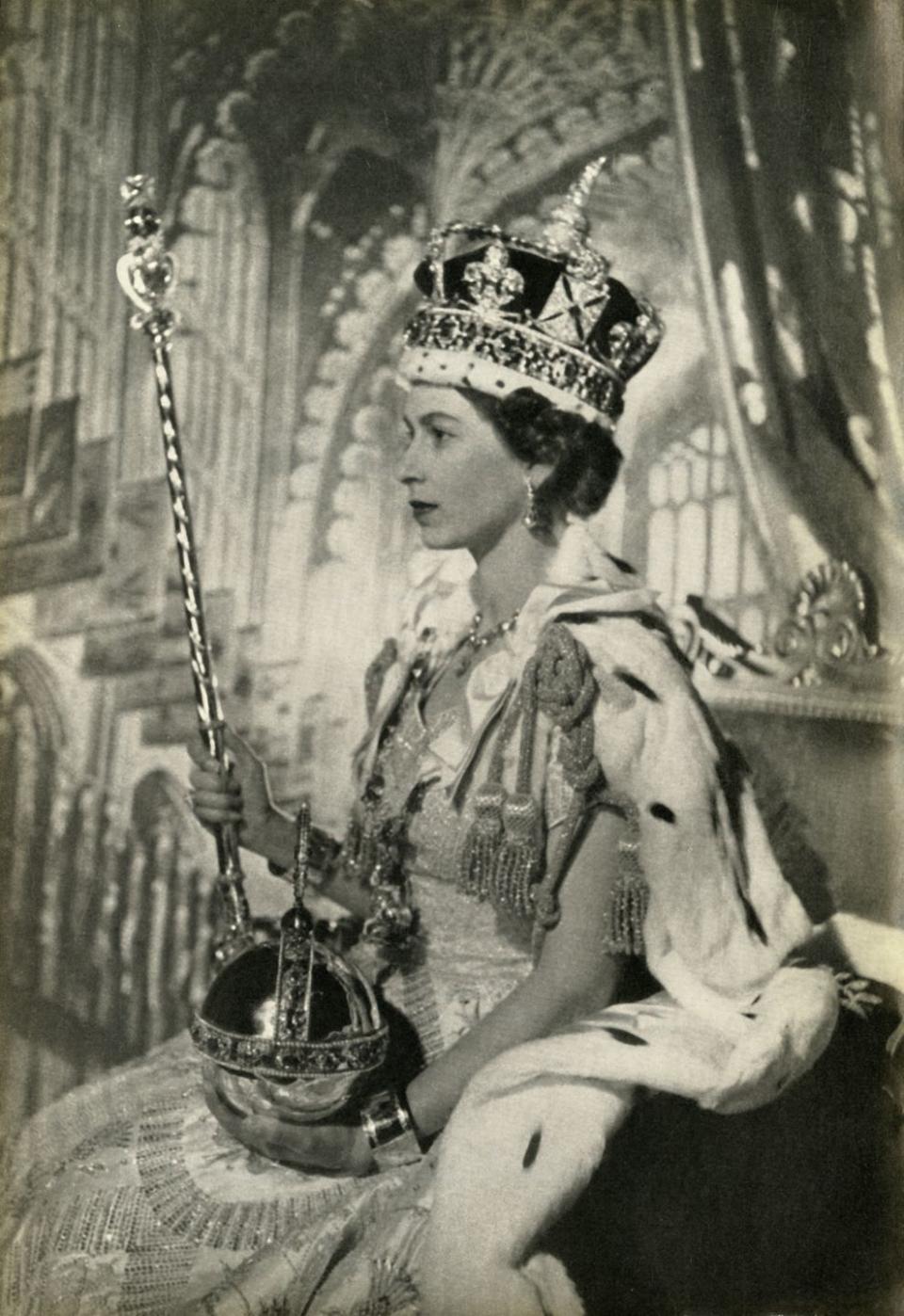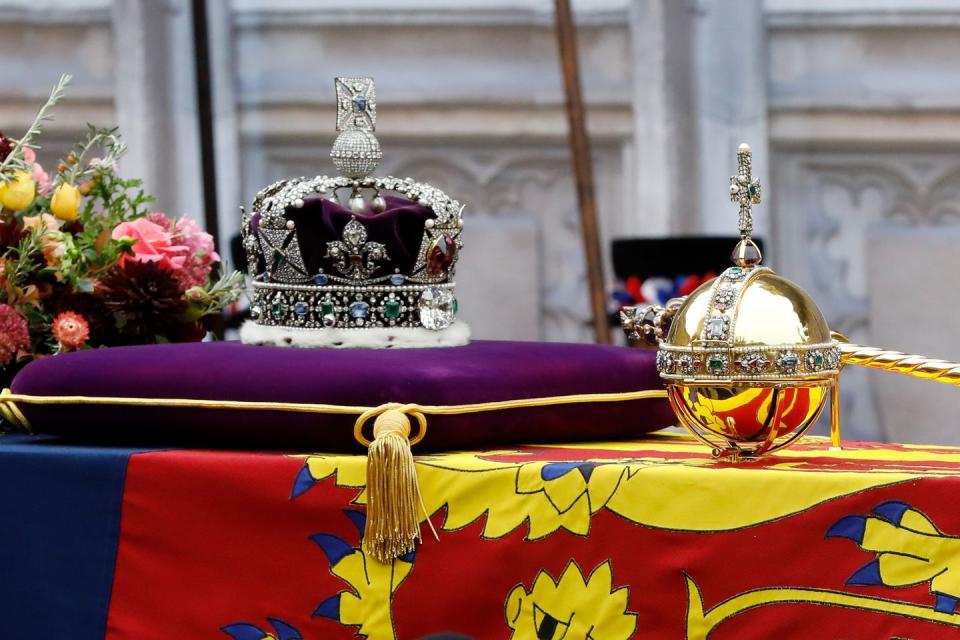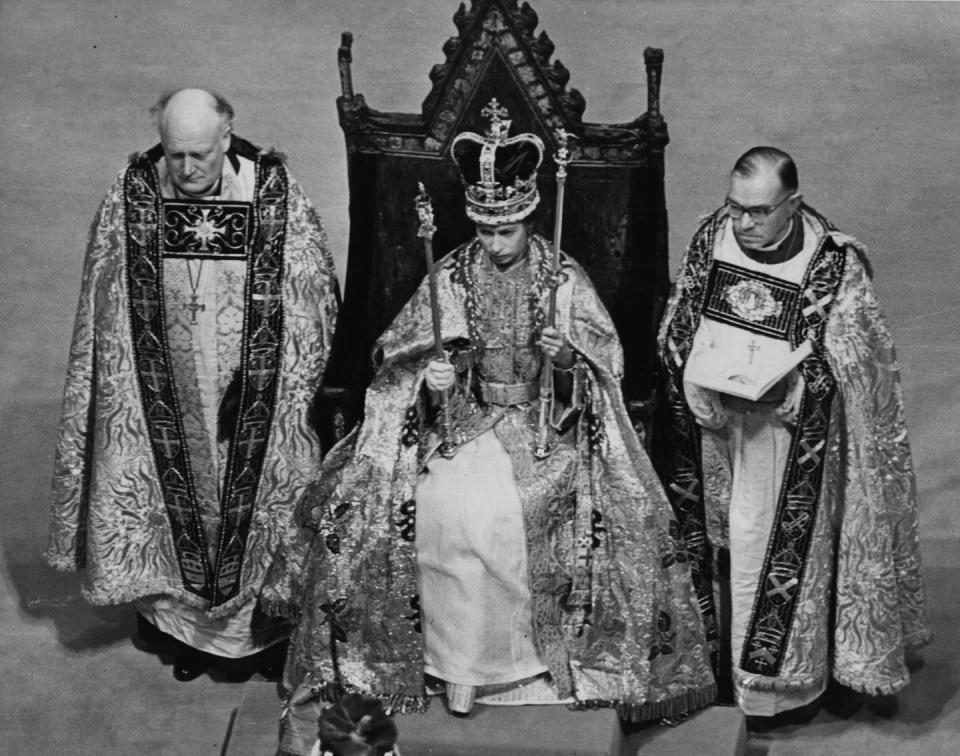What to Know About the Orb and Sceptres Crown Jewels
Of all the regalia expected to be doled out during the May 6 coronation of King Charles III, the Sovereign's Orb and the Sovereign's Sceptres are perhaps the most well-known.
Last seen placed on the coffin of Queen Elizabeth II, these sacred items are part of the United Kingdom's Crown Jewels—and they have long played a significant role at the coronations of previous British monarchs.
During the coronation ceremony, King Charles will be presented with the orb and the sceptres during the investiture, right before the Archbishop of Canterbury places St Edward's Crown atop his head.
The orb and the sceptres each come with their own unique history and convey a special meaning related to the king's powers and responsibilities as sovereign. Ahead, we break down everything you need to know about the historic pieces.

The Sovereign's Orb
Originally commissioned from royal goldsmith Robert Vyner for the 1661 coronation of King Charles II, the Sovereign's Orb represents the monarch's power. The spherical shape and the cross topper is meant to symbolize a Christian world, while the three sections divided by bejeweled bands symbolize the three known continents during the medieval era. Charles will hold the orb in his right hand during the investiture phase of the coronation ceremony.
The orb, made from a hollow gold globe, features several precious gemstones, including rose-cut diamonds, an octagonal step-cut amethyst, a table-cut sapphire, as well as clusters of emeralds, rubies, sapphires, and pearls.

The Sovereign's Sceptre with Cross
The Sovereign's Sceptre with Cross, which was created for King Charles II's 1661 coronation, represents "the sovereign's temporal power and is associated with good governance." It has been used in every coronation since 1661.
The sceptre is made of a gold rod separated into three sections by enamelled collars, featuring precious gemstones such as diamonds, emeralds, rubies, and sapphires. At the top of the rod is a faceted amethyst monde surmounted by a cross set with more diamonds and an emerald.
The sceptre underwent a major alteration in 1910 under King Edward VII, when the Cullinan I diamond—the controversial crystal mined from South Africa that has come to represent the British empire's violent legacy—was added. Also known as the Star of Africa, the Cullinan I diamond is the largest cut from the great Cullinan Diamond, which is the largest diamond ever discovered to date.
The Sovereign's Sceptre with Dove
Also created for the 1661 coronation of Charles II, the Sovereign's Sceptre with Dove shares a similar design as the Sovereign's Sceptre with Cross: a gold rod separated into three sections by enamelled and gem-set collars. Instead of an amethyst monde and a jewel-encrusted cross, however, the sceptre is topped by a gold monde set with rose diamond bangs and a tiny gold cross supporting a white enamelled dove. It additionally features various diamonds, rubies, emeralds, sapphires, and spinels.
This specific sceptre, also known as the Rod of Equity and Mercy, is meant to represent the spiritual role of the sovereign. The dove represents the Holy Ghost, or a divine force in many Christian faiths.

You Might Also Like


